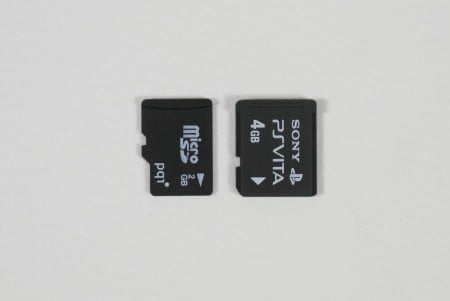What needs work
While there is much to admire about Sony’s next-gen portable, there’s just as much one can find fault with.
Let’s start with something Sony gamers know all too much about: backwards compatibility. This was something mostly missing from the PlayStation 3, and once again, it’s absent from the PS Vita.
Gamers migrating from a PSP will be a little annoyed here – maybe more than a little – as the UMD cartridge system has been ditched and there’s no way to port your titles over to your new device. From what we’ve seen, you’ll have to re-purchase your titles again, potentially forcing you to spend more to play the games you love on a new device.
These PSP games can be purchased on the PlayStation Network, but so can Vita titles. Locally, Vita games purchased from the online store cost as much as the retail physical version, giving you no good reason to download games other than needing something when the retail store is closed.

Given how inexpensive games on mobiles and tablets have proven to be, finding titles for a minimum of $9.95 to around $70 is just plain disappointing. In fact, games that cost barely $5 on the iPhone and iPad can cost three times as much on the Vita, a fact that’s as confusing as it is sad.
If you previously owned a PSP Go – the download-only version of the PlayStation Portable – your games should work here, but gamers with a stack of UMD titles will need to respend in order to use their titles on the new console.
Any title that you buy also needs to install, something we’re a little confused about. While we understand that downloaded games need to live somewhere, the cartridge installations confuse us.
When you insert a cartridge for the first time, you’ll find that it installs to the system, setting up the save-games and installing a shortcut on the menu. But when you take the game out, the shortcut remains, leaving you with an empty shortcut that doesn’t do anything until you return the game cartridge. Personally, we would have just made the shortcut appear when the game was in the console, not a pemanent situation. That seems less confusing to us, but cie la vie.
Battery life is fairly mediocre, too, with roughly five hours of gameplay offered out of the Vita. That’s not great, but given the quad-core processor and OLED screen, it’s not a total surprise.
But that’s not what annoys us most about the Vita. No, for that we look at the memory Sony is using here, something you’ll need to buy if you want to download apps, games, game demos, or generally use the console altogether.
When we first looked at the memory, we thought that Sony had gone with a standard, as from afar, the memory card looks like microSD. Only upon getting closer were we greeted with a slightly different shape, a thicker size, and a completely different pin layout.

And then it hit us: just when we thought it had come to its senses and joined the rest of us with standards, Sony had invented yet another memory format.
We asked Sony why it had gone with inventing yet another memory format, but the company never got back to us. We’re not sure that there is a good reason to introduce yet another memory format, especially when most devices – even Sony cameras, mobile phones, and tablets – use standard memory cards, such as SD and microSD.
Ultimately, we suspect the proprietary Vita memory format is more of an insurance policy for piracy. In the last few generations of PlayStation Portable, Sony would find itself fighting a battle with the PSP modding community, a group that would constantly come up with ways to circumvent the copy protection almost as quickly as Sony could patch it.
With the new type of memory in the Vita, it feels like no matter what happens, Sony wins. Even if modders come up with a way to infringe copyright, they will still be forced to buy Sony’s proprietary Vita memory. Of course, we have no real proof of this, but considering that microSD is a format that already has legs and speed to match, we can think of no other reason to introduce a new memory format.
Conclusion
While Sony has loaded some truly great technology in the Vita, it’s clear that the console isn’t perfect.
We reviewed on the WiFi version which matched our needs perfectly. We’re not really sure why the 3G console would ever be needed, and shudder to think how much it would cost to play games over mobile broadband.
That said, if you’re into games that are more than what can currently be offered on a smartphone or tablet – more than just a casual game of Angry Birds or Peggle there’s no doubt that the Vita will grab your attention.





















